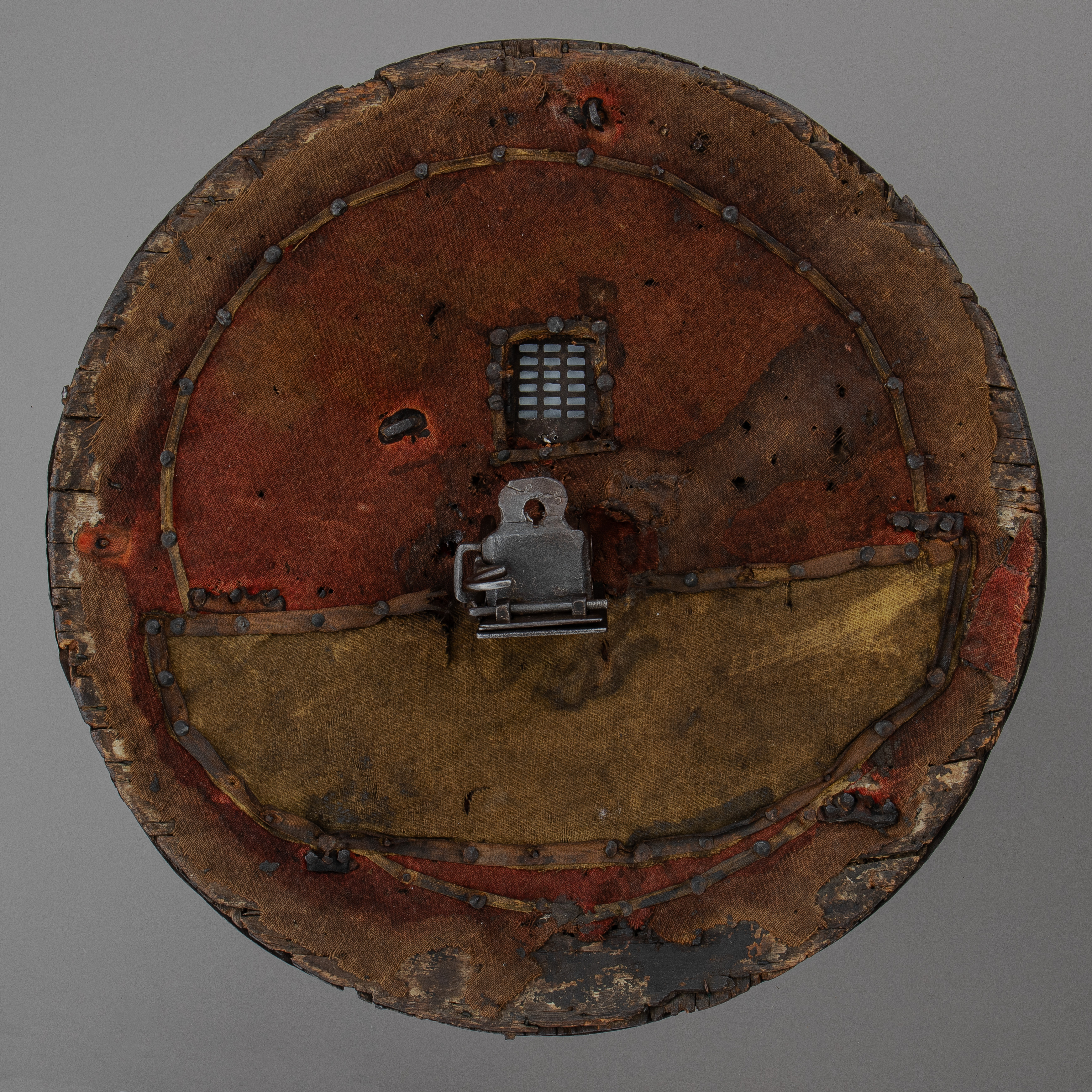Pistol Shield
Not on view
The base of the shield is formed by two layers of wood covered by embossed steel plates. Eight reinforcing bosses were lined with washers of red wool, now completely worn, which served as decoration. In the center is a heavy umbo with an aperture for the round barrel and, above it, an aiming slot and a grilled observation window. Inside, the shield is lined with a canvas pad under the enarmes (grips). A metal rim was formerly attached around the outer edge.
The hand gun of simple, massive construction is one of breechloading type, which opened for the insertion of reloading steel cartidges; it is provided with a touchhole on the top. The cartidge was locked into the chamber by a hinged iron loop with a retaining spring catch; the loop is additionally secured to the breech by a pin passing through two lugs fitting the slots in the breech extension. The shield was held on the left arm, the gun operated by the right hand; once the breech had been loaded and locked closed, the charge could be ignited by hand with a match held ready in a special bracket (now lost) attached to the right of the breech.
This shield is one of a large group thought to have been made for the bodyguard of King Henry VIII of England, of which thirty-five are recorded in the inventory of the Tower Armoury drawn up in 1547 following the king's death. They are usually associated with a document of 1544, in which a Maestro Giovanni Battista, painter of Ravenna, offered his company's service to the English king, listing among the inventions he could supply, "several round shields and arm pieces with guns inside them that fire upon the enemy and pierce any armor." However, except for several shields finely decorated with etching in the Italian style, there is little evidence to connect these shields with the otherwise unknown Maestro Giovanni Battista. The majority of the shields are rather crude in workmanship, including this example, which suggests that they may have been made locally, perhaps in the Tower itself after Italian models.
This shield, together with another in the Metropolitan Museum (acc. no. 14.25.745), was purchase by Prince Peter Soltykoff from the London dealer Samuel Pratt, who in turn is said to have acquired them directly from the Tower of London. At least two other shields from this group are also preserved in American museums, one in the Walters Art Gallery, Baltimore, and another in the George F. Harding Collection in The Art Institute of Chicago.
Due to rights restrictions, this image cannot be enlarged, viewed at full screen, or downloaded.
This artwork is meant to be viewed from right to left. Scroll left to view more.




